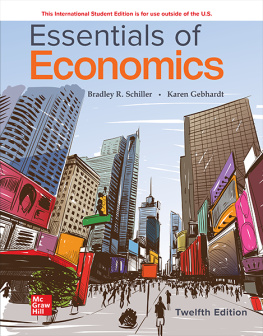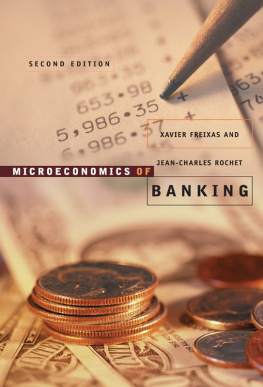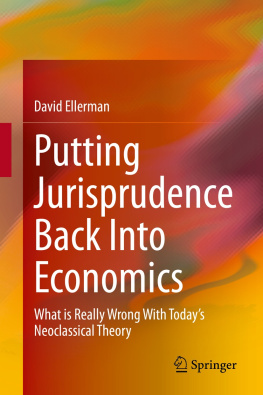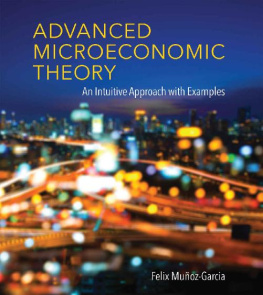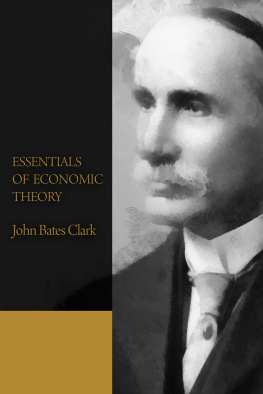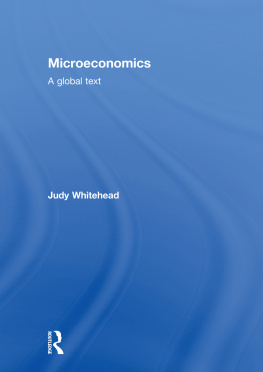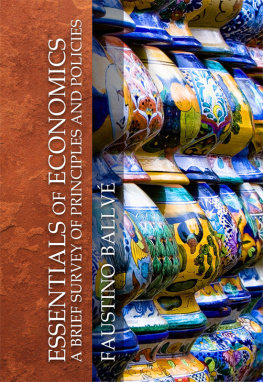Jay Prag - Microeconomic Essentials: Understanding Economics in the News
Here you can read online Jay Prag - Microeconomic Essentials: Understanding Economics in the News full text of the book (entire story) in english for free. Download pdf and epub, get meaning, cover and reviews about this ebook. year: 2020, publisher: MIT Press, genre: Business. Description of the work, (preface) as well as reviews are available. Best literature library LitArk.com created for fans of good reading and offers a wide selection of genres:
Romance novel
Science fiction
Adventure
Detective
Science
History
Home and family
Prose
Art
Politics
Computer
Non-fiction
Religion
Business
Children
Humor
Choose a favorite category and find really read worthwhile books. Enjoy immersion in the world of imagination, feel the emotions of the characters or learn something new for yourself, make an fascinating discovery.

Microeconomic Essentials: Understanding Economics in the News: summary, description and annotation
We offer to read an annotation, description, summary or preface (depends on what the author of the book "Microeconomic Essentials: Understanding Economics in the News" wrote himself). If you haven't found the necessary information about the book — write in the comments, we will try to find it.
Jay Prag: author's other books
Who wrote Microeconomic Essentials: Understanding Economics in the News? Find out the surname, the name of the author of the book and a list of all author's works by series.
Microeconomic Essentials: Understanding Economics in the News — read online for free the complete book (whole text) full work
Below is the text of the book, divided by pages. System saving the place of the last page read, allows you to conveniently read the book "Microeconomic Essentials: Understanding Economics in the News" online for free, without having to search again every time where you left off. Put a bookmark, and you can go to the page where you finished reading at any time.
Font size:
Interval:
Bookmark:

Jay Prag
The MIT Press
Cambridge, Massachusetts
London, England
2020 Massachusetts Institute of Technology
All rights reserved. No part of this book may be reproduced in any form by any electronic or mechanical means (including photocopying, recording, or information storage and retrieval) without permission in writing from the publisher.
This book was set in Times LT Std and Helvetica LT Std by New Best-set Typesetters Ltd.
Library of Congress Cataloging-in-Publication Data
Names: Prag, Jay, author.
Title: Microeconomic essentials : understanding economics in the news / Jay Prag.
Description: Cambridge, Massachusetts : MIT Press, [2020] | Includes index.
Identifiers: LCCN 2019051434 | ISBN 9780262539272 (paperback)
Subjects: LCSH: Microeconomics.
Classification: LCC HB172 .P693 2020 | DDC 338.5dc23
LC record available at https://lccn.loc.gov/2019051434
10 9 8 7 6 5 4 3 2 1
d_r0
This book was inspired by Peter Kennedys (now Kennedy and Prag) wonderful macroeconomics text Macroeconomic Essentials: Understanding Economics in the News. That book took a practical, applied approach to macroeconomics, providing students in many disciplines a text that is approachable and relevant. Microeconomics, in many ways the more newsworthy half of the discipline right now, needed a similar book.
This text offers a nontechnical, intuitive exposition of the microeconomic concepts and principles that are on display in news stories every day. From labor markets and the dicey issue of minimum wages to the health care market; from trade theory to game theory; this book covers the issues that students need to understand in this ever-changing world.
I have kept the style of the book breezy and straightforward in the hope that students who think economics is too abstract and arcane will see its usefulness. I have minimized the use of heavy-duty mathematics, opting instead for intuition. I have tried, in effect, to return microeconomics to the people.
I would like to thank everyone at the MIT Press who supported me in this project and helped get the final product done. I would especially like to thank Emily Taber at MIT for her immeasurable contribution to my publishing career. And most of all, I would like to thank Amanda Ishak Prag, my wonderful wife, my sounding board, and my editor without whom this book would not exist. It is my fondest hope that our darling daughter, Julianna, will learn microeconomics from this text when she grows up.
Economics is a social science. It uses the approaches of science to study the activities of people. The earliest economists focused on obvious economic activitiesconsumer behavior and the likebut modern economists use their tools to analyze human activity far outside this early view. In the two hundred-plus years since its formalization, economics has helped us develop some powerful tools and a lot of useful, sometimes unexpected insights.
But it is important to note that economics is not a pure science; it is a social science. Human behavior is not really waves and particles that can be modeled and understood the way physicists explain matter or the Universe. People are messy and unpredictable; they are complicated and hard to formalize. Therefore, the nature of the choices and decisions people make means economics is much harderand much less precisethan the pure sciences. So we have to make some choices in teaching and using economics. Sometimes the most accurate model isnt very useful in the real world. Sometimes formulas arent helpful in daily decision-making. And so sometimes economics as an exercise in mathematics needs to be balanced with economics as a social process. That is the task we undertake in this book.
One microeconomic concept that I use in many different classes (which gets full coverage in chapter 4) is utility theory. Built from the observation that people dont usually consume large amounts of just one good all the time, utility theory is a model that employs a mathematical concept in which some things grow at a decreasing rate; that is, every step forward is smaller than the previous step. In math- or calculus-speak, this is represented by an equation that has a positive first derivative (every step is forward) and a negative second derivative (the steps get smaller with each iteration). This is the mathematical approach.
In chapter 4, I relegate this approach to an appendix in favor of a simple table showing levels of consumption and their associated levels of happiness (utility). When I do this in the classroom, occasionally someone who has had a previous class in microeconomics will say, Thats not correct! You cant do it that way! You have to use calculus and derivatives! I will ask the student if she remembers how calculus works: specifically, how big is the change that we represent with a first derivative? The answer: infinitely small. Then I ask, Do you buy in infinitely small increments of something in the real world? The answer is probably not. The point is, neither approach, neither the table nor the calculus, is perfect and right.
The math, the calculus, is more formal and elegant, but it isnt right because people dont behave that way. You dont buy a miniscule piece of a candy bar; you buy a big, lumpy, not-very-derivative-sized candy bar (or sometimes the bulk pack). This is not a knock on calculus and math in economics. It is a reminder that formality is not the same thing as accuracy. What matters in most of our economic models is the concept, not the math. We want to understand why people do what they do by watching how they do it.
The math that we use in economicsgraphs and equationsis the proverbial picture thats worth a thousand words. It summarizes the economic activity. But the math isnt whats right. Sometimes we can communicate the concept without the math, and when we can, we might have a better understanding of the activity in question. This book does not focus on math. Instead, we focus on concepts. That said, there are situations in which math is the very best way to teach and learn a concept (the Bertrand model in chapter 8, for example). What Ive tried to do is use the method for teaching a concept that gets the biggest bang for the buck. Sometimes thats a story, sometimes its graphs, sometimes its calculus.
When you leave much of the math behind, you invariably run into things you cannot explain. Fortunately, the math is still there to help out. What we want to do is avoid getting too deep into the maththe weeds. That too is problematic. When are we using just the right amount of math? That will likely be a point of contention for anyone using this book. Of course, your instructor can always put in more math. My hope is that you will understand the concepts and see how the mathematical models can be used to explain economic activities without depending on them to understand economic realities.
To wit, math in economics always reminds me of my dear departed father and his tendency to constantly correct peoples grammar. If I ever dared call him pedantic, he would paraphrase H. W. Fowler, the author of Modern English Usage, and say, One mans pedantry is another mans irreducible minimum of education. In the same way, one instructors weeds are anothers irreducible minimum of mathematical modeling. Our goal is to find the happy medium. Just remember: the math, in economics, is never right. The human activity that we are trying to explain is the foundation of our discipline. Its what were really studying, after all.
Next pageFont size:
Interval:
Bookmark:
Similar books «Microeconomic Essentials: Understanding Economics in the News»
Look at similar books to Microeconomic Essentials: Understanding Economics in the News. We have selected literature similar in name and meaning in the hope of providing readers with more options to find new, interesting, not yet read works.
Discussion, reviews of the book Microeconomic Essentials: Understanding Economics in the News and just readers' own opinions. Leave your comments, write what you think about the work, its meaning or the main characters. Specify what exactly you liked and what you didn't like, and why you think so.

